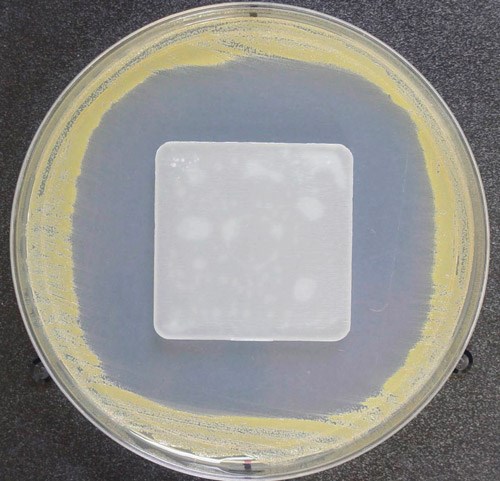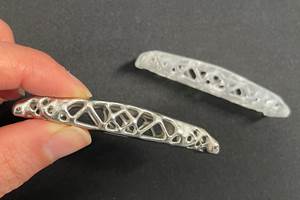We recently featured antimicrobial powder coating as a growing industry sector, and the same can be said for electroplating as
Pavco, Inc. (Charlotte, NC) says it has developed the first antimicrobial metal finish, CleanCoat.
The patent-pending nickel and tri-chrome technology is already in production, and the coating can be found on products across the U.S. today, says Craig Pavlish, a partner at Pavco.
“We’re very excited about the opportunity this antimicrobial technology will offer our finishing partners,” says Pavlish. “This is a real game changer because it’s a tool that grants our partners the ability for exclusivity in their marketplace.”
Pavco partnered with Microban, a major supplier of built-in antimicrobial product protection, to develop CleanCoat. It works when microbes such as bacteria, mold and mildew come in contact with the surface of a product treated with chemicals from Microban. The mixture penetrates the cell wall of the microbe and disrupts key cell functions so that the bacteria cannot function, grow or reproduce.
Pavlish says Microban research shows that surfaces treated with the company’s protection showed a significant reduction in bacteria over a few hours while the untreated surface growth grew by over 10-fold. Over a 24-hour period the bacteria on the surface treated with Microban protection was reduced to almost nothing while the untreated surface increased by one million times.
Pavlish says his products’ advantages are several:
- The antimicrobial protection is electrodeposited in the nickel, providing strong and long-term antimicrobial effectiveness.
- The aesthetic value of finished good remains the same.
- Commercial cleaners and normal wear and tear will not affect antimicrobial properties.
- The technology does not require a dedicated line.
The CleanCoat technology is currently in use with Pavco’s numerous nickel packages and trivalent chrome technology, Hexagone. It can also be used in conjunction with their tin-cobalt offering, PavCoTing. Because of incompatibility issues, it can’t be used with a hexavalent chrome coating.
Pavlish says in a nickel tri chrome application, only the nickel layer requires inclusion of the antimicrobial to attain efficacy. The antimicrobial is electrodeposited evenly throughout the nickel layer as compared to simply resting on the top of the surface. As a result, he says, the antimicrobial becomes an inherent part of the coating and is very secure.
“Until now, all other coatings offering antimicrobial ability were relegated to top-coats occurring post plate, typically in the form of a lacquer,” says Pavlish. “It was expensive, not as efficient and not as secure as our electrodeposited option since the best cross-linked lacquers are more easily compromised when exposed to real world application. The added security of the electrodeposited antimicrobial is a large benefit.”
Pavco says the expected life of the antimicrobial is the same as the useful life of the metal coating itself. If the coating remains uncompromised and free of corrosion, the antimicrobial properties remain.
“The government and EPA regulate that guarantees can’t be placed on proposed life expectancy of any antimicrobial containing product,” says Pavlish. “There are also strict rules as to marketing copy and claims, which both Pavco and Microban work with our partners to ensure compliance.”
An important selling component for the product is that finishers do not need a dedicated line to add the CleanCoat properties. Pavco says all that is required when running antimicrobial work is adding three extra components to the bath.
“When you run standard work, you stop adding the CleanCoat components,” says Pavlish. “The transition between antimicrobial and standard work is seamless and immediate.”
To monitor and control the antimicrobial level, Pavco has developed an extraction method that uses a UV/Vis spectrophotometer, but Pavlish says it is a relatively low equipment cost. Finished goods also need to be submitted into a microbial chamber in a certified lab that confirms the antimicrobial properties of the finished part.
“The antimicrobial is very stable and remains available for quite a long time in a working bath,” says Pavlish. “On a daily basis, it’s reasonable to add back a routine amount per shift to maintain proper levels. We also suggest that bath samples be analyzed on a routine basis, as is common is any efficient finishing operation.”
Pavco says an additional benefit is the opportunity to license the Microban brand for sales and marketing assistance. In this case, Pavco’s partner would work directly with Microban to coordinate this agreement.
“Our experience has shown that finishers can expect a cost increase of between 20-30% only to the standard operating cost of the nickel bath alone,” says Pavlish. “The actual cost increase can fluctuate dramatically directly due to volatile nickel metal costs. But when diluting this cost throughout the remainder of the finishing operation and overall manufacturing of the finished good, the actual cost increase is negligible.”
For information on Pavco, please call 800-321-7735, or visit Pavco.com.





















